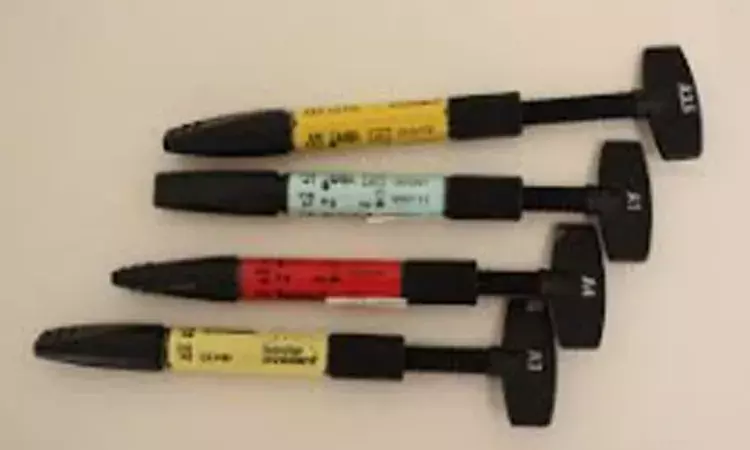- Home
- Medical news & Guidelines
- Anesthesiology
- Cardiology and CTVS
- Critical Care
- Dentistry
- Dermatology
- Diabetes and Endocrinology
- ENT
- Gastroenterology
- Medicine
- Nephrology
- Neurology
- Obstretics-Gynaecology
- Oncology
- Ophthalmology
- Orthopaedics
- Pediatrics-Neonatology
- Psychiatry
- Pulmonology
- Radiology
- Surgery
- Urology
- Laboratory Medicine
- Diet
- Nursing
- Paramedical
- Physiotherapy
- Health news
- Fact Check
- Bone Health Fact Check
- Brain Health Fact Check
- Cancer Related Fact Check
- Child Care Fact Check
- Dental and oral health fact check
- Diabetes and metabolic health fact check
- Diet and Nutrition Fact Check
- Eye and ENT Care Fact Check
- Fitness fact check
- Gut health fact check
- Heart health fact check
- Kidney health fact check
- Medical education fact check
- Men's health fact check
- Respiratory fact check
- Skin and hair care fact check
- Vaccine and Immunization fact check
- Women's health fact check
- AYUSH
- State News
- Andaman and Nicobar Islands
- Andhra Pradesh
- Arunachal Pradesh
- Assam
- Bihar
- Chandigarh
- Chattisgarh
- Dadra and Nagar Haveli
- Daman and Diu
- Delhi
- Goa
- Gujarat
- Haryana
- Himachal Pradesh
- Jammu & Kashmir
- Jharkhand
- Karnataka
- Kerala
- Ladakh
- Lakshadweep
- Madhya Pradesh
- Maharashtra
- Manipur
- Meghalaya
- Mizoram
- Nagaland
- Odisha
- Puducherry
- Punjab
- Rajasthan
- Sikkim
- Tamil Nadu
- Telangana
- Tripura
- Uttar Pradesh
- Uttrakhand
- West Bengal
- Medical Education
- Industry
Rapid high-intensity light-curing not recommended for flowable bulk-fill composites: Study

According to a recent research published in the Journal of Dentistry, it has been observed that rapid high-intensity light-curing cannot be recommended for flowable bulk-fill composites since it may compromise the tooth-restoration interface.
Rapid high-intensity light-curing of dental resin composites is attractive from a clinical standpoint due to the prospect of time-savings
MatejPar and colleagues from the Department of Endodontics and Restorative Dentistry, School of Dental Medicine, University of Zagreb, Croatia carried out the present study with the objective to investigate the effect of rapid high-intensity light-curing on the marginal integrity of four bulk-fill composites, including two materials specifically designed for high-intensity curing.
Class V cavities were prepared on buccal surfaces of intact human molars with simulated pulpal pressure, filled in a single increment and light-cured using a conventional (10 s @ 1,340 mW/cm2) or high-intensity (3 s @ 3,440 mW/cm2) protocol.
The restorations were subjected to thermo-mechanical loading (TML) comprising 1,200,000 mechanical loading cycles and 3,000 thermocycles. Quantitative margin analysis was performed before and after TML using a scanning electron microscope, and the marginal integrity was expressed as percentage of continuous margin (PCM).
The following results were found-
a. All PCM values measured before TML were statistically similar regardless of the material and curing protocol (p>0.05).
b. A statistically significant effect of the curing protocol (p = 0.021) was identified only after TML for one material.
c. PCM was significantly diminished by TML (p<0.001) for most combinations of material and curing protocol.
d. The PCM values of the sculptable composites after TML were statistically similar regardless of the curing protocol (p>0.05).
e. Compared to these values, significantly lower PCM after TML was identified for the flowable composites cured with the high-intensity protocol (p = 0.001–0.045).
Hence, the authors concluded that "in most cases, high-intensity and conventional curing generally led to similar marginal integrity. Although all of the investigated composites initially performed similarly well, the flowable composites light-cured using the high-intensity protocol showed a significantly inferior marginal integrity compared to the sculptable composites after loading."
Dr. Nandita Mohan is a practicing pediatric dentist with more than 5 years of clinical work experience. Along with this, she is equally interested in keeping herself up to date about the latest developments in the field of medicine and dentistry which is the driving force for her to be in association with Medical Dialogues. She also has her name attached with many publications; both national and international. She has pursued her BDS from Rajiv Gandhi University of Health Sciences, Bangalore and later went to enter her dream specialty (MDS) in the Department of Pedodontics and Preventive Dentistry from Pt. B.D. Sharma University of Health Sciences. Through all the years of experience, her core interest in learning something new has never stopped. She can be contacted at editorial@medicaldialogues.in. Contact no. 011-43720751
Dr Kamal Kant Kohli-MBBS, DTCD- a chest specialist with more than 30 years of practice and a flair for writing clinical articles, Dr Kamal Kant Kohli joined Medical Dialogues as a Chief Editor of Medical News. Besides writing articles, as an editor, he proofreads and verifies all the medical content published on Medical Dialogues including those coming from journals, studies,medical conferences,guidelines etc. Email: drkohli@medicaldialogues.in. Contact no. 011-43720751


